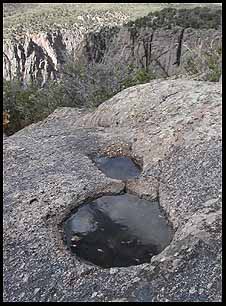
EPHEMERAL POOLS PLUS
There are about 39 species of lamprey currently described plus some additional landlocked populations and varieties. This means they evolved millions of years before the dinosaurs roamed the earth. Lampreys are an amazing group of ancient fish species which first appeared around 360 million years ago.
Cowichan Lake Lamprey Cowichan Lake Lamprey (Home Grown). Their average life span is two to four years in the wild, but up to nine years in captivity. Male frogs are typically smaller than the females. They are often confused with Pickerel Frogs ( Lithobates palustris) whose spots are more squared then rounded and have a yellowish underbelly.Ĭolour variations of the Northern Leopard Frog 
Black pupils and golden irises make up their eyes. The tympanum is an external hearing structure just behind and below the eye that looks like a small disk. Another pale line travels underneath the nostril, eye and tympanum, ending at the shoulder. They have white bellies and two light coloured dorsal (back) ridges. They can be different shades of green and brown with rounded black spots across its back and legs and can even appear with no spots at all (known as a burnsi morph). They have a variety of unique colour morphs, or genetic colour variations.

Northern Leopard Frogs are about the size of a plum, ranging from 7 to 12 centimetres. Historically, these frogs were harvested for food (frog legs) and are still used today for dissection practice in biology class. Another common name for this frog is the ‘meadow frog’ for its common habitat. The Northern Leopard Frog ( Lithobates pipiens) is named for its leopard-like spots across its back and sides.
Ryan Hodnett Northern Leopard Frog Wetland Wonderland (webisode) Wetlands (30 seconds) Wetlands (60 seconds). Sugar Maple Sugar Maple (15 seconds) Sugar Maple (30 seconds) Sugar Maple (long version) Sugar Maple (Youth) Plants. Amber Fortowsky Pronghorn Pronghorn (Youth) Pronghorn (15 seconds) Pronghorn (30 seconds) Pronghorn Mammals. Ken Risi Long-billed Curlew Long-billed Curlew (Youth) Long-billed Curlew (15 seconds) Long-billed Curlew (30 secondes) Long-billed Curlew Birds. Prepare and distribute fact-sheets alerting landowners, developers, schools, and community groups about the importance of these habitats. Ask naturalists and biologists for more information. You can be a huge help to aquatic creatures by educating yourself and the public about these special spots. Vernal pools are not protected or even acknowledged by the Canadian Wetland Classification System. Cattle and all-terrain vehicles can crush inhabitants and churn up mud, which clogs the gills of salamander larvae and developing tadpoles. Elsewhere, vernal pools are “improved” by dredging and fish-stocking. Larger vernal pools, such as prairie potholes, are often considered wasted land and are, therefore, drained and cultivated. To add to the challenge, these critical habitats are being paved over by spreading suburbs. But the absence of predators, such as fish and reptiles found in permanent water bodies, makes the rush worthwhile. Survival is a race against time for inhabitants of vernal pools. With luck, tadpoles will now be tiny toads, ready to hop on to the next stage of their lives. As the water dries up, some inhabitants simply move on. 
A host of other wildlife, like tiny, transparent fairy shrimp and water striders, also live part-time in vernal pools.

The imperilled mountain dusky salamander and great basin spadefoot toad both rely on vernal pools to reproduce. Yet they are critical to the life cycles of many amphibians and invertebrates. These short-lived soggy spots last anywhere from a few days to three or four months before drying up. Others, like prairie potholes, are relatively large. Vernal pools are temporary wetlands formed in depressions, thanks to rain and melting spring snow. Video & Sound Wetland Wonderland (webisode) Related Links Protect Prairie Potholes and Streams Revitalize a Wetland Wetlands Lesson Plans








 0 kommentar(er)
0 kommentar(er)
